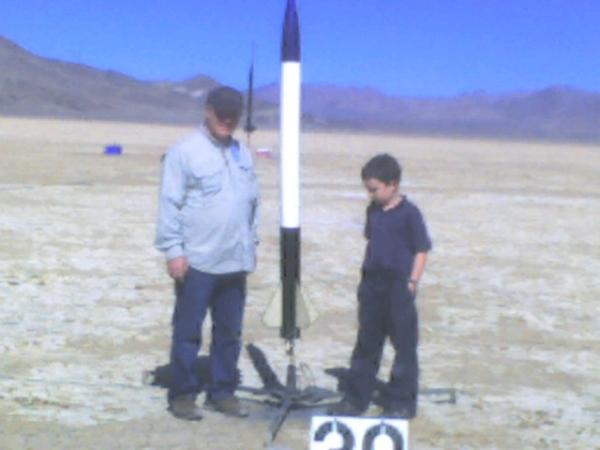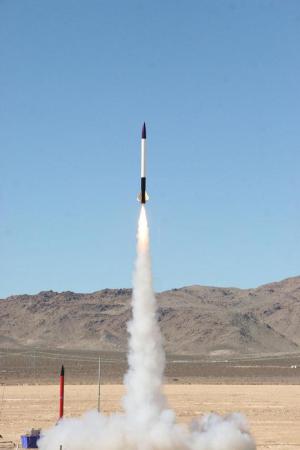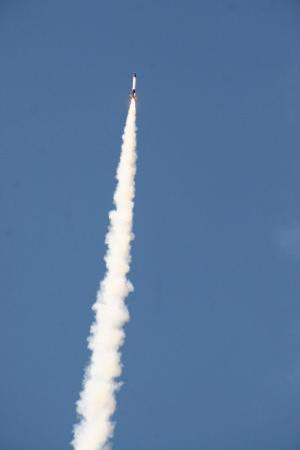| Manufacturer: | Scratch |
Brief:
I gave the rocket the name #2 because it was my level 2 rocket. #2 is my first scratch built high power rocket and my
first duel deploy rocket. Except for the booster being zipperles the rocket was built using the INFO central articles
about duel deployment and anti zipper boosters for
reference.
#2 uses two altimeters for flight control a Perfect Flight MAWD and a Missle Works R2CC. The recovery sequence is a 18" drouge at apogee follwed by a backup charge two seconds and a 72" main at 400' with back up at 300'

Construction:
The airframe is made of LOC 3.9 tubing. The booster airframe is 24" long and both the drogue and payload
sections are 17" long with a LOC avionics bay coupling the sections together.
#2 is a four fin rocket using 3/16 inch Baltic Birch for fins and the three centering rings and bulkheads. The fins have the edges framed with 1/8" carbon fiber tubing to add rigidity.
The airframe was covered with two layers of basalt sleeve from Soller Composites. West System epoxy and medium hardner was used for the lamination
Finishing:
I chose basalt sleeving for the airframe because the information said it was stronger and less expensive than
fiberglass of the same weight. This might be true but the basalt weave is very course and took two layers to cover the
tubing. there was also a very heavy weave pattern that needed filling. I made a paste of colloidal silica and epoxy
that could be spread on the tubing filling most of the imperfections. I will not use the basalt sleeve again the
fiberglass sleeve has a much finer weave and is easier to work with.
After filling and a couple coats of primer #2 was painted with black Rustolium metallic spray paint. The paint covers well and has a nice metal flake look.
Flight:
Motor choices are from the larger I's through K's. The 54mm motor is retained by a AeroPac retainer.
The drogue parachute is protected with a 12"x12" Nomex® blanket and the main parachute is positively deployed and protected by piston ejection.
The maiden flight of #2 was my Level 2 certification flight. Being my first high power scratch built I was very nervous about the flight. The rocket took off straight and went up and up now I was panicked about my first duel deployment. I could see the smoke from the drogue event and was able to track the rocket on and off until the main deployed. the rocket landed within walking distance and I carried it back for a successful level 2 flight.


Recovery:
The recovery harness uses 25' of 1/4" Kevlar®
rope from the booster to the center section and 25' from the center to the nose cone and is attached with quick links
to ubolts. The ubolt on the booster is coupled to a piece of allthread that is bolted through the top motor mount. the
fiberglass nose cone has a 1/4" ubolt mounted to a bulkhead that is epoxied inside the shoulder. A 10' piece of
5/8 tubular nylon connects the parachute to the nose cone
Summary:
PRO's
The rocket flies nice and straight
The rocket is super strong because of the extra layers of basalt and epoxy
CON'S
The rocket is very heavy because of the extra layers of basalt and epoxy
Sponsored Ads
 |
 |











